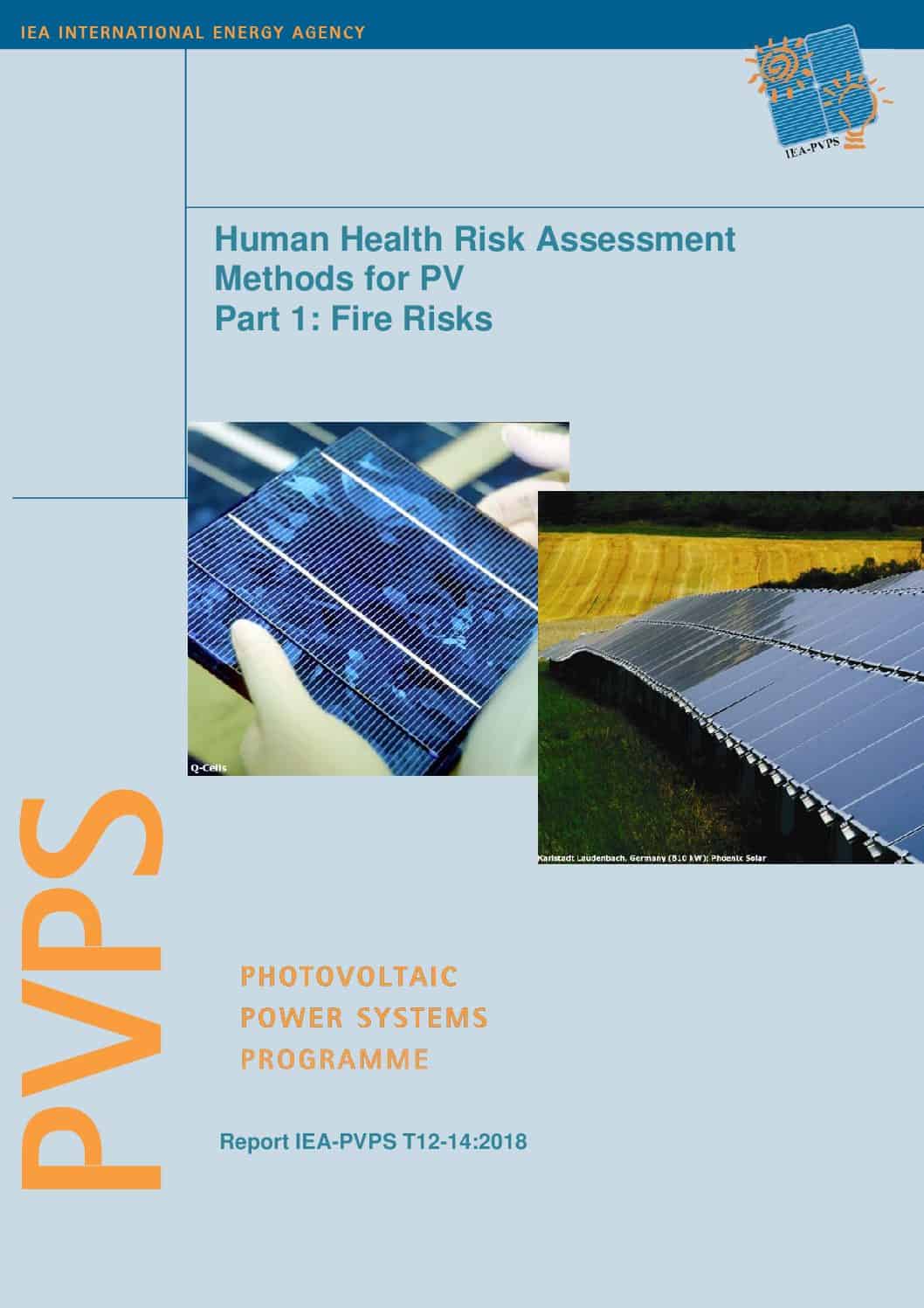The photovoltaic (PV) industry has experienced rapid growth in recent years due in part to the development of public policies to address climate change and energy security. Some industry stakeholders have expressed concerns regarding potential human inhalation exposure to hazardous materials should a PV module array be exposed to fire, particularly in a residential or commercial rooftop application.
To evaluate these concerns, fire hazard analysis methods are presented that can estimate emissions that may occur when PV modules (hereafter mostly referred to simply as “modules”) are exposed to fire, estimate the associated chemical concentrations in ambient air downwind from the fire, and finally compare these exposure‐point concentrations to health‐protective screening levels.
Specifically, this report presents an analysis of potential human health impacts associated with chemical release from modules during a building fire for three PV technologies, focusing on airborne release of the highest‐prioritized chemical element for each: lead (Pb) content in crystalline‐silicon (c‐Si) modules, cadmium (Cd) content in thin film cadmium telluride (CdTe) modules, and selenium (Se) content in thin film copper indium selenide (CIS) modules.
The intent of this analysis is to demonstrate the application of the proposed methods for modules exposed to fire in a quantitative yet illustrative manner. In particular, this report quantifies what are expected to be the worst‐case potential health impacts over a wide range of possible conditions, including building/fire size, downwind receptor location, exposure duration, and meteorological conditions, utilizing a Gaussian plume modeling approach that is typically used in regulatory contexts.
